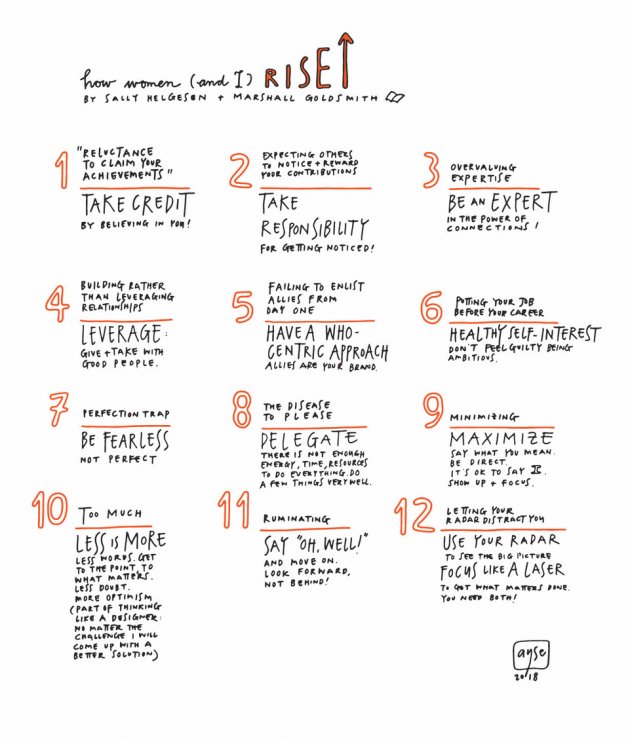Cooper Hewitt National Design Awards were just announced. The nation's highest honors, now in its 19th year, are often called the Oscars of design, where entries are nominated and juried by peers.
As a former jury member I wondered the message this year's awards would collectively send. After all, it is a jury's unwritten rule to use the winning entries to articulate what constitutes our highest values around a topic at a given time.
The National Design Awards' rigorous process of recognizing the best also takes the pulse on what matters in design in America today.
Looking at the winners with that perspective two messages emerge:
1. Design is a "diverse field."
Traditionally male-dominated, design at the highest levels of excellence is multi-gender, multi-race and multi-culture. In this design is ahead of Hollywood, another bastion of creativity. The diversity of the awards sends an important and timely message to all designers: you too can be here, regardless of where you come from.
2. Design is a "healthy field".
These great people are doing good--ethical, progressive work that improves our lives, our cities, our perception of our world--while also doing well--succeeding commercially and making their clients succeed.
I first heard of the term, "healthy field," in Jonathan Haidt's book, The Happiness Hypothesis. Haidt explains that "when doing good (doing high-quality work that produces something of use to others) matches up with doing well (achieving wealth and professional advancement), a field is healthy."
And this second message is very important to companies. Design at its best makes companies successful by making them do good and well. Design is a healthy field. Use it.
"All ten of this year's winners present a powerful design perspective and body of work that is at once inclusive and deeply personal, accompanied by great achievement, humanity and social impact." Caroline Baumann, director of Cooper Hewitt.
Here are the winners:
Gail Anderson, Lifetime Achievement. Anderson is designer, writer, and educator. Steven Heller, a Cooper Hewitt Design Mind, says, "a lifelong New Yorker, Anderson embodies three virtues: inspiring art director, inspired designer and inspirational teacher." You've been surrounded by her work--from Rolling Stone Magazine (where she was a Senior Art Director) to her posters for Broadway and off-Broadway plays to her books covers.
Anne Whiston Spirn, Design Mind. Author of the seminal book, the Granite Garden. Spirn has dedicated herself to building sustainable relationships between the built and the natural environment.
"Human survival depends upon adapting ourselves and our landscapes - cities, buildings, roadways, rivers, fields, forests - in new, life-sustaining ways, shaping places that are functional, sustainable, meaningful, and artful, places that help us feel and understand the relationship of the natural and the built." Anne Whiston Spirn, from her website for the Granite Garden
Design for America (DFA), Corporate & Institutional Achievement. DFA was founded by Liz Gerber and three of her students at Northwestern University to use design innovation for social good. Everything from how to reduce hospital inquired infections to campus waste, or create access to potable water.
WEISS/MANFREDI, Architecture Design. Marion Weiss and Michael Manfredi, the co-founders of the firm see their work at the intersection of an existing site overlaid with a new project. They unearth what is possible (hidden potential, use, innovation) when the old and new come together. Seattle Art Museum: Olympic Sculpture Park is a living example of what they bring to built environments.
Civilization, Communication Design. Civilization, tackles tough, often divisive social problems with humanity and grace. Its co-founded by Michael Ellsworth, Corey Gutch and Gabriel Stromberg. Their projects include #ShoutYourAbortion and Death Over Dinner, and Design Lecture Series, a destination for the Seattle design scene.
"Design is a collective human act." Civilization
Christina Kim, Fashion Design. Kim who is known for her company Dosa is a designer, entrepreneur and social activist. She embodies the term "conscientious designer", designing beautiful, sustainable, ethical products in consideration with its impact in people's lives--people who make them as well as use them.
"Similar to eating organic food, people need to know where goods come from and how they are made, this will help keep the artisan traditions alive.." Christina Kim, from her writings, Life of Jamdan
Neri Oxman, Interaction Design. Oxman is the founder and director the Mediated Matter research group at the MIT Media Lab. But you can think of her as Elon Musk of design (and that is a compliment to Musk). She brings together biology, material sciences, computational design, 3D printing and computational design, to everything from wearables, called Astrobiological Exploration, to architecture.
Oppenheim Architecture + Design, Interior Design. The firm, with work in 25 countries, defines its work as "designs with sensitivity toward man and nature - harmonizing with the surroundings of each context."
Mikyoung Kim Design, Landscape Architecture. Boston-based Mikyoung Kim and her team give soul and humanity to public spaces. Case in point is the ChonGae Canal Restoration, which unearthed the canal that runs through Seoul, transforming the city and breathing it life, not unlike what the High Line has done in New York City.
Blu Dot, Product Design. Founded by Maurice Blanks and John Christakos, who started the company because they couldn't afford the designs they liked and what they could afford they didn't like. That became the raison d'etre for Bludot as a business--to make a stand for good design that is affordable.
This article first appeared on Inc.com on May 16, 2018

